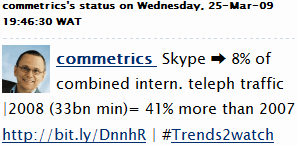 Free has become a very attractive proposition for users. Nevertheless, ceteris paribus (all things being equal) using a freemium model must enable the company’s revenue-generation. Below we outline the five critical pillars on which a freemium model must rest to maintain a viable business.
Free has become a very attractive proposition for users. Nevertheless, ceteris paribus (all things being equal) using a freemium model must enable the company’s revenue-generation. Below we outline the five critical pillars on which a freemium model must rest to maintain a viable business.
Not a subscriber yet – want the scoop first, please just leave your e-mail address in the field below.
1) Value proposition
The user must believe that the time spent using the product – think games – or working with a tool or software, adds value. The latter can be measured as just having fun or being able to spend less time getting one’s accounting done by using the right software.
Unless the value exceeds that gained with a competing product (e.g., smartphones such as the Nokia N97, which sold half a million units in a month after its June launch vs. the Apple iPhone 3GS, which sold more than one million units in three days after its June 19 launch), the user will either not sign up or simply switch to another service as soon as possible.
2) Diffusion: The more, the merrier
Early on, mobile phones were not attractive for very many because neither one’s business associates nor friends used one. As economics has taught us, only once an application con only spread effectively to others once it becomes prevalent in a niche market (e.g., business associates, movie buffs or friends).
 A perfect example is Skype’s runaway success with Danish students in early 2004 because it helped them save on phone charges. As a student, one had to ‘be on Skype’.
A perfect example is Skype’s runaway success with Danish students in early 2004 because it helped them save on phone charges. As a student, one had to ‘be on Skype’.
3) No fixed costs but pay to play
In Europe, one reason for prepaid SIM cards’ success is that users do not pay a monthly subscription fee and charges accrue only according to use (i.e. outgoing calls). Still, a monthly subscription service is required to get some services such as unlimited monthly calls and Internet service.
The mobile phone business has demonstrated that this model of pay to play/talk can work very successfully for service providers.
4) No such thing as a free lunch
Beta users of Skype and Facebook felt that both provided value and a rapidly-expanding user base led to diffusion beyond critical mass, thereby making success possible. Facebook and Skype remain super hard to compete with because they are also free.
Nonetheless, in all these cases free is either a gimmick (e.g., Starbucks’ or the Second Cup’s free WiFi service) or part of the basic service that helps the provider to generate revenue by selling advanced features and/or serving online ads (e.g., Skype sells add-on services such as phone numbers).
5) Investing in one’s brand: Risk management
 In European football (or soccer), clubs pay ever higher transfer fees for better players. This helps to win more games, while building a global brand. All clubs shown to the right use the freemium model here and there, such as free soccer camps or free attendance to exhibition games for school kids.
In European football (or soccer), clubs pay ever higher transfer fees for better players. This helps to win more games, while building a global brand. All clubs shown to the right use the freemium model here and there, such as free soccer camps or free attendance to exhibition games for school kids.
Here, freemium builds the emotional link between youngsters and clubs, thereby making parents more willing to:
- – fork out a substantial amount of money for each game they want to see with their kids, and to
– purchase club merchandise, such as t-shirts, at astronomical prices.
Nevertheless, none of the clubs listed above has managed to be in the black without help from their owners, such as Silvio Berlusconi picking up the tab for AC Milan… again!
Bottom line: Make money or die
While freemium exists in infinite variations, unless one feels one needs a product (e.g., worth dying for if it is a fashion accessory), people will:
- a) neither try it (e.g., Google Chrome), nor
b) be willing to fork out cash for the privilege of using advanced services (e.g., using Skype to make cheaper international calls from your mobile).
Letting a user try your service for free is different than letting them use it for free.
The freemium model only works if it supports the company’s efforts to make the revenue required to assure a positive cash flow, one way or another. When Qualcomm no longer got the revenue stream it needed from Eudora Pro, it gave the rights, including those for Eudora Light, to the Mozilla Foundation – Penelope.
In order to pay the bills and finance growth we have decided to use the freemium model (free to use – pay to play with advanced features) for My.ComMetrics.com. Right now, Twitter can still do without charging, but how much longer before investors pull the plug?
Check out:
– FREEMIUM: Give basic service away for free, acquire a lot of customers , then charge for premium service.
– a venture capital firm (VC) might ask, “… would I want this if it were free?”
– besides Twitter, LinkedIn, MySpace and Facebook, there are a plethora of social networking sites that are failing.
Okay, now it’s your turn. Would you have answered any of these questions differently? Did I miss something in one of the answers? Agree, disagree, shout with joy, cry with pleasure… please share your thoughts.
Pingback: Steve Brown
Pingback: Steve Brown
Pingback: World Economic Forum
Pingback: Urs E. Gattiker
Pingback: Urs E. Gattiker
Pingback: MyComMetrics
Pingback: MyComMetrics
Pingback: Terry Martin
Pingback: Twitter Trackbacks for Best business model: Free to use, pay to play [commetrics.com] on Topsy.com
Pingback: Tim Rafferty
Pingback: TCR Enterprises
Pingback: Very useful links: Microsoft vs. Facebook vs. SAP
Pingback: Very useful links: NFL bans Twitter, now with adverts
Pingback: No Virginia, social media client-engagement is a myth! - social media analytics, social media tracking, social media measurement, best practice, benchmark, KPI, why benchmark - ComMetrics: social media monitoring => best practice
Pingback: ComMetrics weekly review: Data-theft to tweet-deaths via free tools - top stories, Amazons Elastic Computer Cloud or EC2 vulnerability to hacking, 34 free social media tools, Microsoft and Bings imminent release of a new joint feature, why BBC AOL and the
Pingback: TBO interactive
Pingback: Johnson Lab
Pingback: Measuring social media to boost ROI » social media monitoring, social media measurement, marketing metrics, ROI, best metrics, best practice, cost-benefit analysis, benchmark social media, right blog metrics, reputation, brand management » ComMetrics
Pingback: CyTRAP
Pingback: Urs E. Gattiker